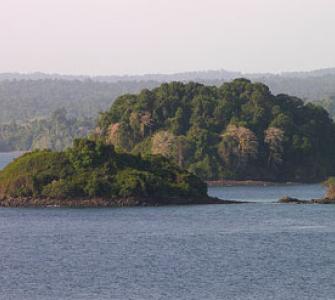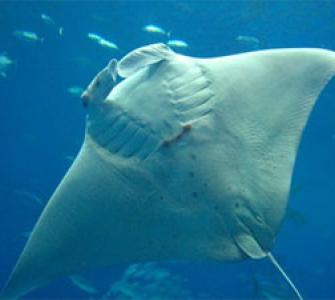Conservation Strategy Fund (CSF) conducted economic valuation research of Marine areas in Belize, Panama, and Brazil. This work was supported by Conservation International’s Marine Management Area Science program and the Gordon and Betty Moore Foundation. Valuation of ecosystem goods and services was carried out within three formally protected marine areas: Gladden Spit (Belize), Coiba (Panama) and Abrolhos (Brazil). CSF's Coiba research was led by one of our training graduates, Ricardo Montenegro, of the Alliance for Conservation and Development, a Panamanian NGO.
The research focused on benefits from tourism and fishing in and around the Coiba National Park, a lush island surrounded by reefs that formerly served as a remote prison colony. The park's ecosystems were found to support over 325 jobs and long term net benefits of $20.5 million for fishermen and 15.3 million in the tourism sector. Another key finding was that the park does not need large investments in visitation infrastructure to satisfy tourist's needs.
The entire research process was carried out in collaboration with the Smithsonian Tropical Research Institute and the Panamanian National Environment Authority as part of the development of a master plan for the park.
Coiba National Park (CNP) is in the Western region of Panama in the Montijo-Chiriquí Bay. The park was established 1991, and in 2004 the Park was elevated to the highest level of protection in Panama. The Park contains 1,700 hectares of coral reef, one of the biggest reefs in the eastern pacific, intact mangroves, and nine islands with primary forest cover. Fishing and tourism are the most important economic activities carried out in Coiba’s Marine Protected Area and surrounding areas. Artisanal fishing is very important for income generation of some of the surrounding communities. Fishing effort has increased dramatically over the past twenty-five years and may be leading to overfishing. Tourism is also increasing in Coiba National Park. Scuba diving and Sport fishing are among the most frequent activities, but there are no controls over these activities. The development of incompatible tourism-related infrastructure such as large hotels also poses a significant threat to the island. The Smithsonian Tropical Research Institute is deeply involved in the management of Coiba’s National Park and in the development of a new management plan. ANCON is the main group working with the fishing community to protect Coiba National Park. Mar Viva is another NGO that helps ANAM monitor the area and teaches environmental education in some nearby communities.
The research aims to serve local communities, as well as conservation professionals in NGOs and government who play active management and support roles in the conservation of Coiba’s Marine Protected Area. Secondary audiences will be policy makers and the general public who make or influence higher-level decisions on development in Coiba’s islands and the coastal areas of Veraguas and Chiriquí. A third audience will be graduate students and academics, who can extend the MMAS work by using the baseline data and methods in their own investigations.


